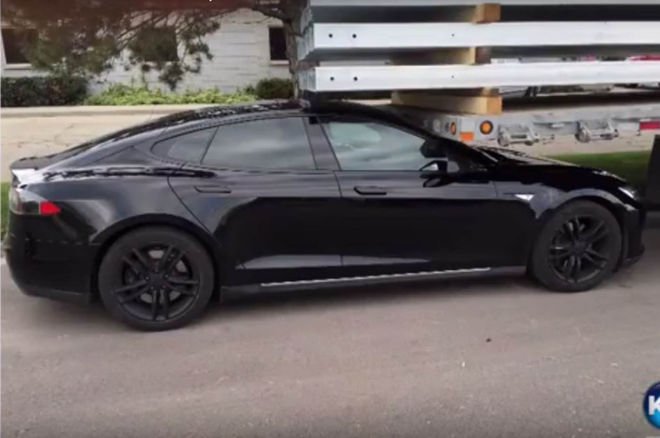Did This Tesla Model S Go Rogue?

According to the letter, Overton ignored multiple warnings and did not cancel the Summon feature when prompted after he initiated it.
“The driver was alerted of the Summon activation with an audible chime and a pop-up message on the center touchscreen display. At this time, the driver had the opportunity to cancel the action by pressing CANCEL on the center touchscreen display; however, the CANCEL button was not clicked by the driver,” the letter from Tesla stated.
Original story:
A man in Utah claims his Tesla Model S not only started up on its own, but crashed itself into the back of a trailer. According to Jared Overton, the owner of the Model S, the vehicle crashed when he went inside the building in front of where he parked to speak with someone while running errands.
“I think it behooves them to figure out what happened, what happened with the vehicle, address it. Just fix it,” Overton told KSL News. The vehicle was reportedly left unattended for five minutes, after which the owner returned to find that his Model S had driven underneath the parked trailer and the windshield smashed.
Tesla was notified, and, after reviewing the vehicle logs, sent a letter to Overton stating that it was his fault for not properly using the Summon feature (the Summon features allows owners to retrieve and park their vehicles via the keyfob). Tesla’s letter also went on to say that the feature was activated three seconds after Overton exited the car and closed the door. The driver claimed he never did such, and even if he did so by accident, the Model S should have only started to park itself while he was standing by it.
“Even during that 15, 20 second walk right here, we would have easily heard the impact of the vehicle into the back of the trailer,” claimed Overton. “They can tell me what they want to tell me with the logs, but it doesn’t change what we know happened here.”
Tesla and Overton continued to go back and forth on the matter, with the automaker claiming that an owner should monitor vehicle activity when using autonomous features and stop it if necessary with the key fob or mobile app. Overton believes that if there was an injured party involved, Tesla’s response and actions would be different. “I will not feel safe with my little boy playing in the garage or the driveway if there’s the potential for a rogue vehicle,” Overton said.
Related News


